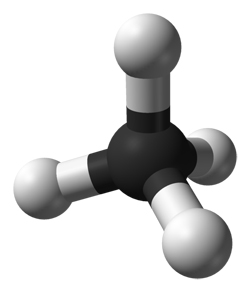CEER PROGRAM DIRECTORY
Air Resource Engineering (ARE)
Atmospheric Physicochemical Processes (APP)
Building Energy & Environments (BEE)
Pawel Misztal
Zoltan Nagy
Sergio Castellano
Process Energetics Program (PREP)
Aleta Wilder
Karl Stephan
Process Science & Technology Center
Separations Research Program (SRP)
Texas Industries of the Future (TIOF)
Coming Soon!
CEER Seminar Series
RESEARCH AND PROJECTS
View the links below to learn more about CEER research and projects:
 |
Unprecedented Measurements Provide Better Understanding of Methane Emissions during Natural Gas Production Release Date: 9/16/2013 Completion emissions are lower than previously estimated; Data show emissions from pneumatic controllers and equipment leaks are higher than EPA national emission projections; Estimates of total emissions are similar to the most recent EPA national inventory of methane emissions from natural gas production. |
| AUSTIN, Texas - A new study from The University of Texas at Austin reports on extensive measurements of methane emissions - including the first measurements for methane emissions taken directly at the well pad - during completion operations for hydraulically fractured wells. A team of researchers from UT Austin's Cockrell School of Engineering and environmental testing firms URS and Aerodyne Research completed measurements at 190 natural gas production sites across the United States. The study was published today in the Proceedings of the National Academy of Sciences. | |
| AIR QUALITY RESEARCH PROGRAM The Texas AQRP is administered by the University of Texas at Austin, and is funded by the Texas Commission on Environmental Quality (TCEQ), through the Texas Emission Reduction Program (TERP). TERP funds emission reduction projects in communities throughout Texas. To help insure that these emission reductions are as effective as possible in improving air quality, a fraction of the TERP funding is used to improve our scientific understanding of how emissions impact air quality in Texas. |
|
| The specific goal of the State of Texas Air Quality Research Program (AQRP) is to support scientific research related to Texas air quality, in the areas of emissions inventory development, atmospheric chemistry, meteorology and air quality modeling. Research topics are identified and prioritized by an Independent Technical Advisory Committee (ITAC). Projects to be funded by the AQRP are selected from the list of ITAC recommended projects by the Texas Commission on Environmental Quality (TCEQ) and an Advisory Council. |
|
 |
CORPUS CHRISTI AIR MONITORING AND CAMERA PROJECT The University will install, maintain and operate an air monitoring and surveillance camera network along the Corpus Christi ship channel to record the concentrations of specific air pollutants along the industrial area. The University will install at least seven air monitoring stations and two surveillance cameras along the ship channel. The air monitoring stations will record concentrations of hydrogen sulfide (total reduced sulfur), sulfur dioxide and volatile organic compounds, including benzene, and meteorological data. Data obtained from the monitors will be made available to the public via the TCEQ website and the UT Austin website. |
Additionally, access to view the images captured by the surveillance cameras will be made available to the public via the UT Austin's Project website. The University will not identify emission sources, investigate and remediate air quality concerns and/or initiate enforcement actions. These functions are outside the scope of this Project. The Project started October 2, 2003 and will continue for seven years or longer, depending on the available Project funds. |
|
| GREENHOUSE GAS (GHG) EMISSION FACTOR DEVELOPMENT PROJECT Currently, the primary source of information on CH4 emissions from the natural gas industry is a study conducted in 1996 for the Gas Research Institute (GRI) and the U.S. Environmental Protection Agency (EPA). While the GRI/EPA Study serves as the basis for most natural gas industry CH4 emission estimates worldwide, there have been significant changes in the industry since the time the study was performed and opportunities exist for reducing the uncertainties associated with the emission estimates. |
|
| The overall goal of the project is to update default CH4 emission factors for selected processes and equipment used in the natural gas industry that take account of new data collected since the GRI/EPA study and reflect any significant changes in practices or equipment since the GRI/EPA study. |
|
 |
LIFE CYCLE FOOTPRINTS OF ENERGY SYSTEMS Analysis of Innovative Feedstock Sources and Production Technologies for Renewable Fuels EPA Cooperative Agreement XA-83379501-0 |
| The purpose of this study was to consider alternative feedstocks that could be converted to biodiesel or ethanol using the well understood processes of fermentation or transesterification and which are not currently used to make biofuels in the US. Four different feedstocks were considered: sugar cane, citrus waste, cottonseed, and microalgae. A Life Cycle Assessment (LCA) approach was used to examine the land occupation requirements, water use, net energy, and emissions to air, including greenhouse gases carbon dioxide (CO2), methane (CH4) and nitrous oxide (N2O). |
|

